Disease Process, Introduction, and Spread
- The Human Immunodeficiency Virus (HIV) is a contagious that causes a condition known as the Acquired Immune Deficiency Syndrome (AIDS).
- This virus is passed to another person through vaginal fluids, breast milk, blood, and semen.
- Unprotected sex is the leading mode of infection.
- Physical contact cannot result in infection.
- Tears, sweat, and saliva cannot transmit the virus.
- Despite the initiatives and measures implemented to deal with this communicable disease, new cases continue to be recorded every year.
- The World Health Organization (WHO) indicates that over 3.4 million people in Nigeria are living with this condition (Ajuwon, Komolafe-Opadeji, & Ikhizama, 2014).
- Statistics also reveal that over 1 million patients are unaware of their medical statuses.
- This tool can empower and guide more people to protect themselves from the dangers associated with this disease.
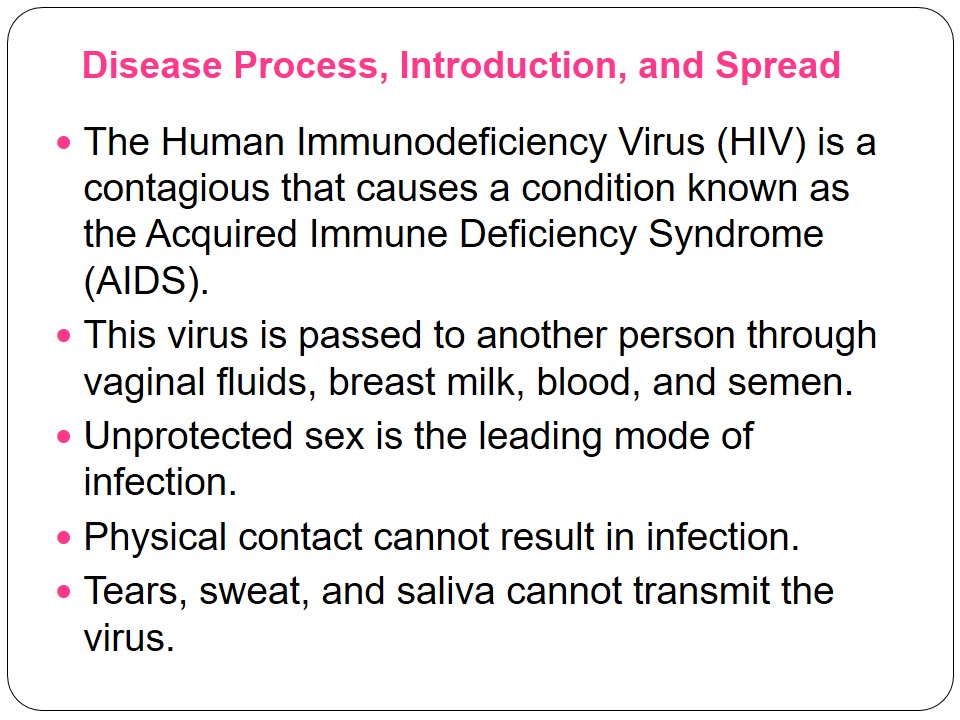
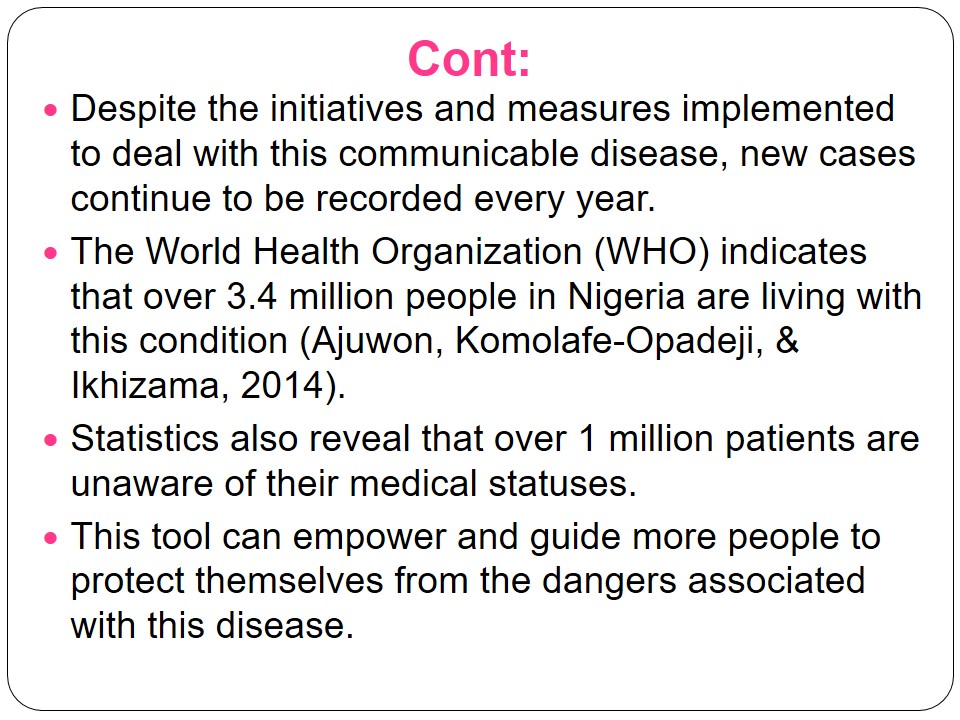
Self-Management Tips
- HIV/AIDS is a leading cause of death in the developing world.
- Primary and secondary prevention measures have the potential to deal with this epidemic (Ajuwon et al., 2014).
- Individuals should engage in a number of self-management practices. Some of these tips include:
- Frequent testing and counseling.
- Engaging in protected sex.
- Using condoms.
- Infected persons should use ARVs.
- Mothers infected by HIV should not breastfeed.
- Balanced diets and healthy food materials.

Diet and Nutritional Directions
- HIV/AIDS patients should be keen to monitor their nutritional statuses and diets.
- These insights will serve every person with this communicable condition positively:
- Avoid soft drinks and sweets.
- Eat dies high in legumes, whole grains, and vegetables/fruits.
- Meals should have small quantities of good fats.
- Proteins and carbohydrates are essential.
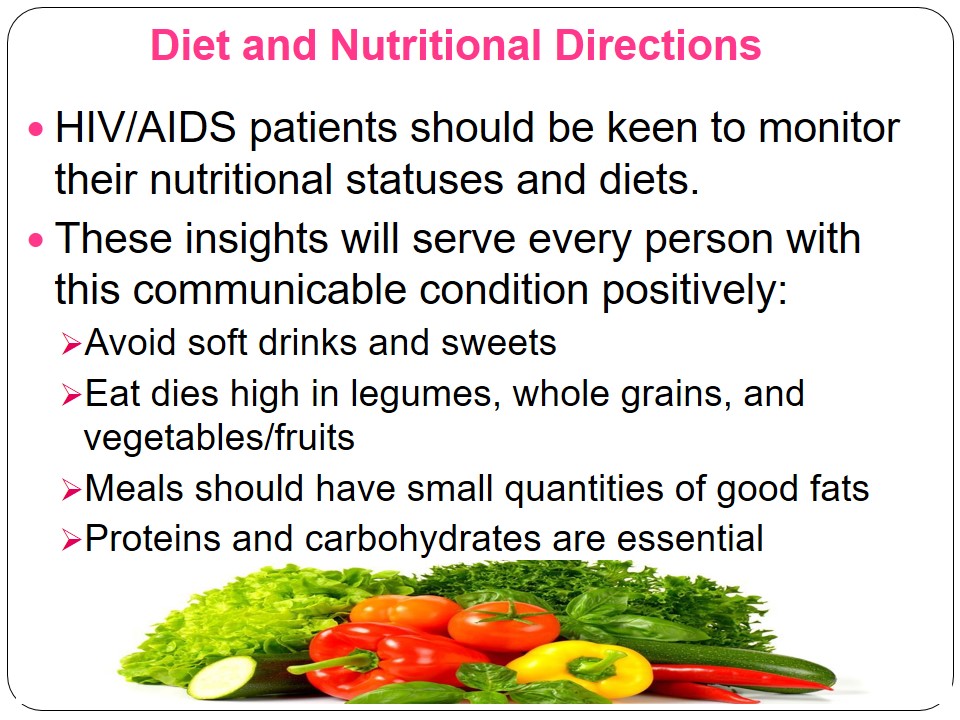
Potential Treatment Options
- Secondary preventative measures are essential because they guide patients to contain or manage HIV/AIDS.
- The chances of infecting others with the virus reduce significantly whenever positive treatment methods are put into consideration (Ajuwon et al., 2014).
- These options are essential for patients who have been diagnosed with this disease:
- HIV drugs and medicines can be taken daily.
- The combination of such drugs is known as antiretroviral therapy (ART).
- Engaging in exercises.
- Taking appropriate medicines to treat side effects.
- HIV medicines are known to result in drug-drug interactions.
- This means that doctors should advice their patients accordingly in order to deliver positive results.
- Specific issues such as drug resistance should be monitored frequently.
- This practice will guide physicians to identify the right combinations depending on the unique needs of the targeted individual.
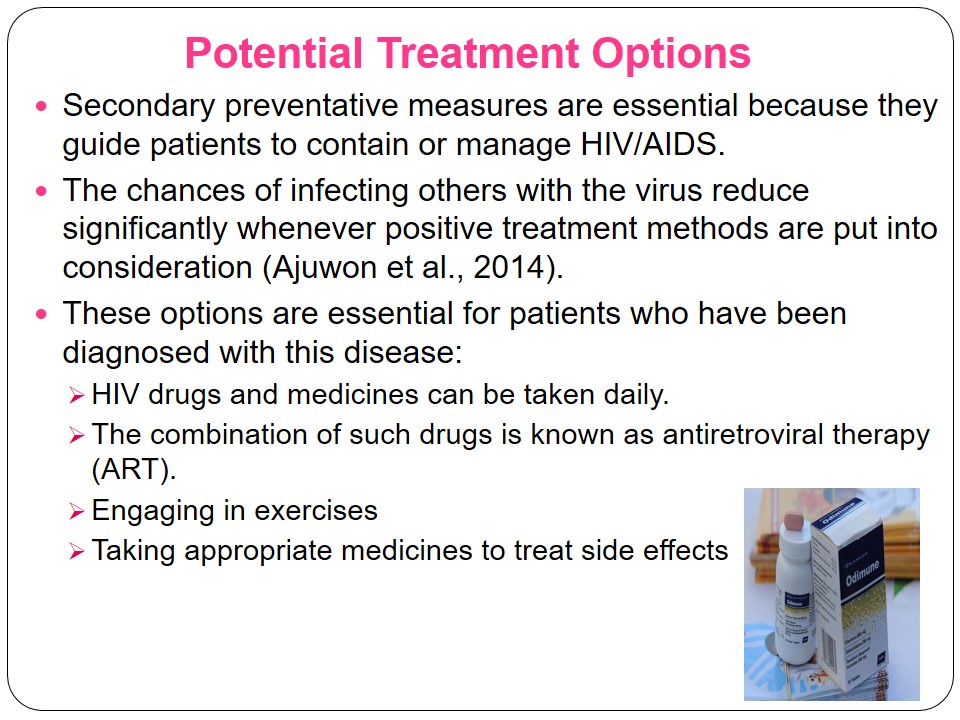
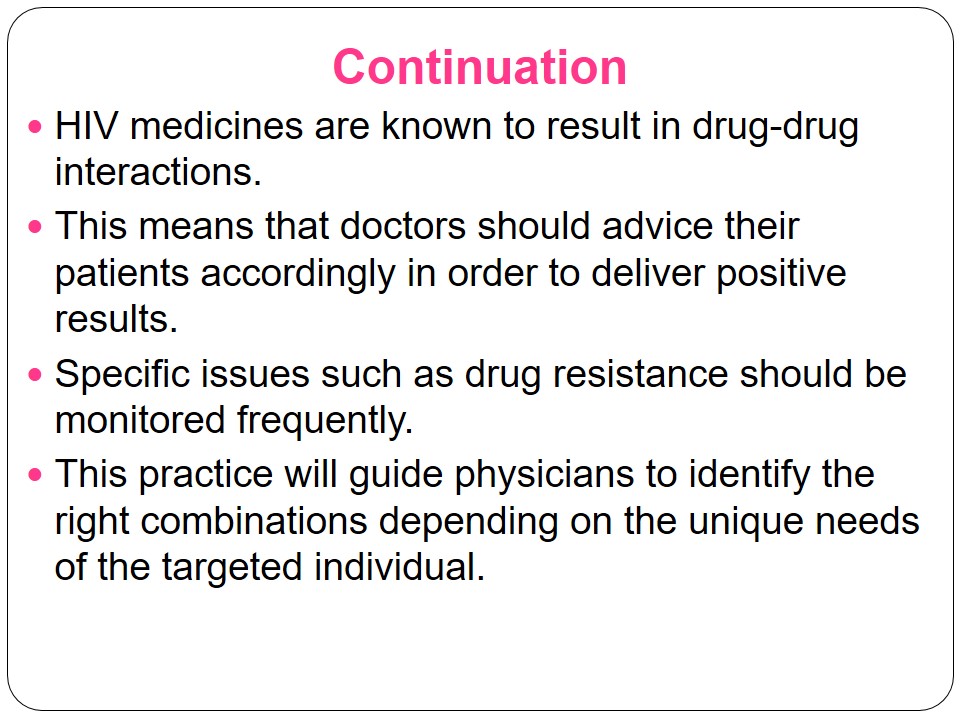
Potential Resources
- Many people in Nigeria can learn a lot about the issues associated with HIV/AIDS from a wide range of resources.
- Patients can focus on different agencies such as the World Health Organization (WHO) and the Aids Alliance Organization (AAO). These bodies have websites that offer evidence-based ideas and information that can be embraced by individuals who want to protect themselves from the condition (Mbachu, Okoli, Onwujekwe, & Enabulele, 2017).
- Additionally, patients can identify new drugs and therapies that can improve their lifestyles and health outcomes.
- Individuals can also focus on a number of publications and campaigns implemented by the Government of Nigeria in order to know more about the emerging issues associated with this condition.
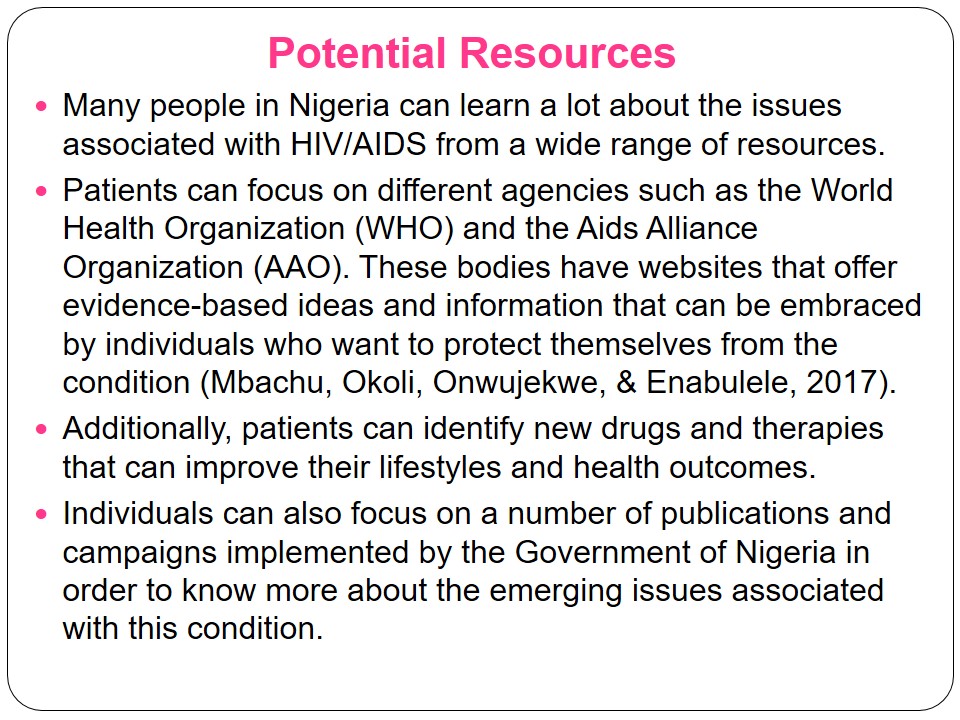
Risk Reduction
- Maartens, Celum, and Lewin (2014) indicate that individuals aged between 15 and 65 are at risk of contracting this condition.
- The problem of this disease is worsened by the fact that many people are unaware of their HIV statuses.
- The absence of adequate educational resources is something that makes it impossible for many people to protect themselves from HIV/AIDS.
- The identification and knowledge of appropriate practices can result in risk reduction, thereby supporting the health needs of many people in this developing country.
- These measures/practices have the potential to reduce the risk of contracting this communicable disease:
- Being tested for HIV at least once every year;
- Parents should educate their children about the issues associated with HIV/AIDS;
- Church elders and community leaders should inform more people about this disease;
- Counseling should be available to persons with HIV/AIDS;
- Individuals should engage in protected sex;
- Pregnant women should be tested in order to engage in evidence-based practices.

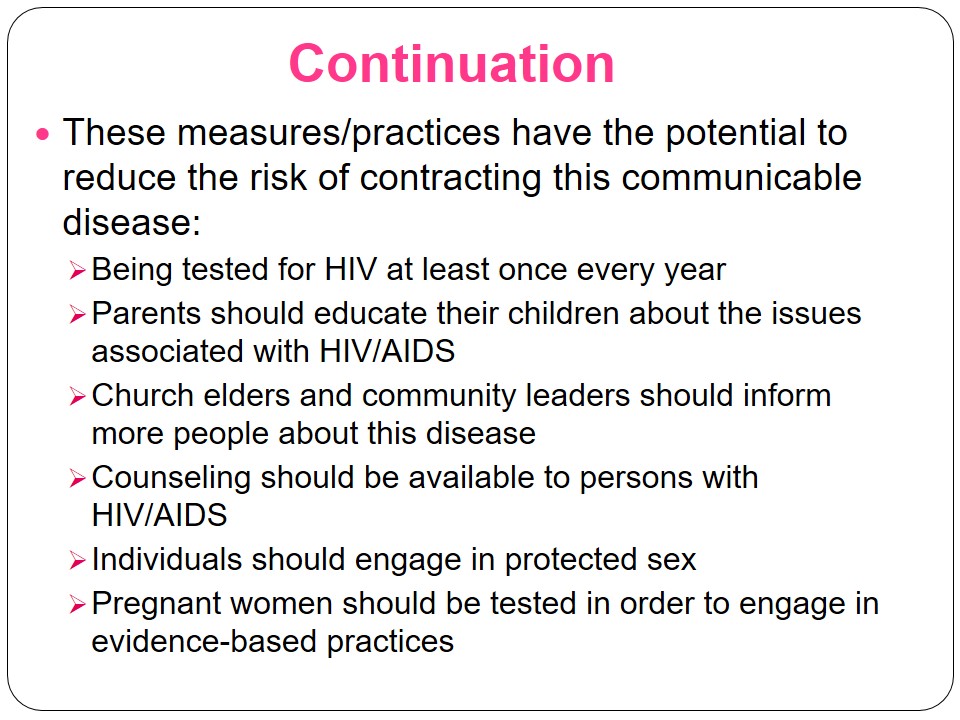
Concluding Remarks
- Patients should not infect others with the virus.
- They should be on the lookout for any information about the disease.
- Patients should embrace the use of ARVs.
- Cases of rape should be reported immediately.
- Balanced diets should be taken seriously.

References
Ajuwon, G. A., Komolafe-Opadeji, H. O., & Ikhizama, B. (2014). Librarian-initiated HIV/AIDS prevention intervention program outcome in rural communities in Oyo State, Nigeria. International Quarterly of Community Health Education, 34(4), 367-390. Web.
Maartens, G., Celum, C., & Lewin, S. R. (2014). HIV infection: Epidemiology, pathogenesis, treatment, and prevention. The Lancet, 384(9939), 258-271. Web.
Mbachu, C., Okoli, C., Onwujekwe, O., & Enabulele, F. (2017). Willingness to pay for antiretroviral drugs among HIV and AIDS clients in south-east Nigeria. Health Expectations, 21, 270-278. Web.